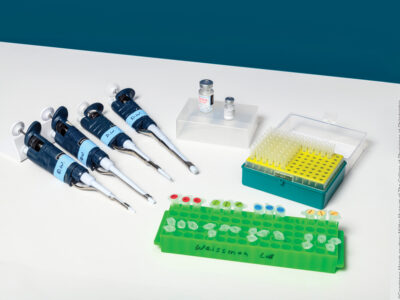In late June, shortly after the Gazette’s July|August issue went to the printer, The New York Times reported that a substantial number of veterans treated for prostate cancer at the Philadelphia VA Medical Center (PVAMC) had received substandard care. The problems arose in a unit performing brachytherapy, in which thin needles are used to implant tiny radioactive seeds in and around a tumor to kill cancer cells. According to an investigation by the Nuclear Regulatory Commission (NRC) and VA officials, 92 of the 114 patients who underwent the procedure at the PVAMC between 2002 and 2008 received either too little radiation to the prostate or too much to surrounding tissues including the bladder and rectum. The majority of the procedures were performed by Dr. Gary Kao, an associate professor of radiation oncology at the School of Medicine, which was under contract with the PVAMC to provide brachytherapy there. Kao also performed brachytherapy at Penn, but his procedures there were apparently problem-free. Dr. Richard Whittington, also an associate professor of radiation oncology at Penn, performed at least three of the problematic procedures at PVAMC, according to the NRC.
One PVAMC patient, an Air Force veteran named Ricardo Flippin, suffered rectal pain and loss of bowel control that debilitated him for six months, causing him to lose 20 percent of his bodyweight and his job with a church coalition in West Virginia.
Of the 92 cases determined by the NRC to have involved a “medical event” that should have been reported within 15 days of its discovery, Flippin’s is one of what appears to be a smaller number that resulted in injury or failed treatment. In July a VA official testified before the House Committee on Veterans’ Affairs that the treatment had clearly not been effective for six patients, and that blood levels of prostate-specific antigen in another eight indicated a potential resurgence of the cancer.
By comparison, a 2003 study in the International Journal of Radiation Oncology, Biology, Physicsconcluded that for patients meeting the same disease criteria as the veterans who were operated on at PVAMC, 94 percent who received an optimal dose implant remained free of prostate cancer after 8 years. Kao, who stopped performing brachytherapy at PVAMC and at Penn last year, defended himself at a Senate Veterans’ Affairs Committee field hearing on June 29. Denying allegations that he had covered up mistakes by adjusting pre-implant surgical plans after the fact, he also portrayed the misplacement of seeds in healthy tissue as one of the “recognized risks of the procedure.” Furthermore, he described brachytherapy as a “collaborative interdisciplinary effort” in which the team he led tried to deliver quality care “under sometimes challenging circumstances.”
“I am not willing to be the scapegoat for the complex, systematic problems that affected the brachytherapy program at the PVAMC,” he said.
One of those was an “interface problem” between a CT scanner and a computer terminal that cropped up in late 2006, preventing the PVAMC brachytherapy team from making post-procedure dosimetry calculations to determine precisely how much radiation the prostate had received. Kao testified that he reported the nonfunctional network connection to the appropriate personnel on several occasions, but that the problem persisted for 14 months.
So, “I had only two choices: to stop the brachytherapy program, or to continue to deliver medical care which the patients needed,” he said. “I elected to continue treatment based on concern for the patients’ welfare.” Under questioning from Senator Arlen Specter C’51, however, Kao testified that he had neglected to inform patients after mistakenly implanting as many as 40 seeds into the bladder. Typically, the procedure involves between 60 and 120 total seeds destined for the prostate.
In an interview with the Gazette, Eric Horwitz C’88, president of the American Brachytherapy Society (ABS) and clinical director of radiation oncology at Fox Chase Cancer Center in Philadelphia, discussed the normal risks of the procedure. It is possible for seeds to migrate slightly after they are implanted, he said, and it is possible to stick a needle in the bladder. “But 40 seeds is an incredible number of seeds” to end up there, he added.
Horwitz observed that even in cases involving much smaller margins of error, “You tell your patient.” And because the seed-placement planning for each implant relies on imaging of the prostate that can be somewhat subjective and inexact, it is critical to calculate the actual radiation dose delivered after the procedure is over.
“The implant is not just sticking seeds in a patient’s prostate,” Horwitz said. “Doing post-implant dosimetry is part of the implant.”
Three weeks after the Senate field hearing in Philadelphia, the House Committee on Veterans’ Affairs held its own in Washington. Kao again made a statement and faced questions. So did Dr. Steven Hahn, the Henry P. Pancoast Professor and chair of Penn Medicine’s department of radiation oncology, and Michael Bieda, clinical chief of the radiation oncology department’s division of medical physics.
Kao expressed regret over his decision to continue performing brachytherapy on veterans despite being unable to do post-implant dosimetry. “I should have broken the chain of command,” he said. “I should have been more assertive. I should have stopped the program at that point.”
Yet he argued that the NRC’s published definition of a “medical event” had been insufficiently precise. In its report on PVAMC’s brachytherapy program, the NRC used a standard known as D90, which refers to the radiation dose received by 90 percent of the prostate. This standard is commonly used by clinicians and in the research literature (as is another, V100), but is absent from the NRC’s published rule, which defines any dose that exceeds or falls short of the prescribed one by greater than 20 percent as a reportable medical event, but does not specify exactly which standard of measurement to apply.
Kao contended that “closer to 20” of the 92 cases in question actually merited classification as involving a medical event.
Steven Hahn, chair of Penn’s department of radiation oncology, testified that “the standard that’s been applied to these cases is one that is in our belief complex and controversial.” But he also said that even just “one instance in which a veteran received less than the best possible health care” would be “unacceptable.” Hahn candidly addressed a question concerning the breakdown of oversight and peer-review at PVAMC. As the point of care, PVAMC is ultimately accountable for assuring the quality of care provided under its roof. Yet some had questioned whether the VA’s supervision of outside contractors was less vigilant that it should have been.
“We sensed this as a joint responsibility of oversight,” Hahn said before the House panel. “And sometimes when there is joint responsibility, there is lack of clarity and definition. So I think there’s plenty of food for thought for all of us.”
An August 9 story in The Philadelphia Inquirer raised questions about whether PVAMC, in contracting out its brachytherapy program to Penn, had selected a partner for whom the procedure was something less than a signature strength. Prior to becoming the leader of the PVAMC program, Kao was inexperienced in brachytherapy. He received his training in a two-day course at Northwest Hospital in Seattle and was proctored by more-experienced physicians in his first 10 procedures at PVAMC. By contrast, says ABS president Eric Horwitz, “Most people now are trained in their residency,” as Horwitz was in the mid-1990s. Another brachytherapy expert, Donald Fuller, wrote in a 1999 letter to the Journal of the American Medical Association: “There are significant tricks, traps, and subtleties that need to be mastered before a brachytherapist is skilled enough to perform the procedure. This competence occurs only after a practitioner has performed a large number of procedures.”
In the Inquirer’s story, Penn spokesperson Susan Phillips said that “the quality and effectiveness of Penn Medicine’s brachytherapy program is of a very high standard.”
Hahn told the House panel that Penn’s own brachytherapy program recently instituted stricter peer-review protocols whereby the slightest anomaly triggers redoubled scrutiny. (The PVAMC brachytherapy program is currently under suspension.) Penn also began transitioning to what is called “real-time dosimetry” in 2008, he added. “This provides the attending physician with instantaneous feedback and an opportunity to modify his or her plan if necessary to achieve the desired radioactive dose to the prostate. We believe this approach should lead to greater consistency with respect to seed location and the delivered dose.”
Horwitz stresses that such innovations amount to ongoing improvements in what is recognized as an effective treatment with an excellent safety record overall.
“It’s not a new treatment,” Horwitz says. “It’s been around for a long time. It’s pretty well established. We’ve got pretty strict guidelines. It’s a really good treatment, if you do it well on the right patient.”
—T.P.




